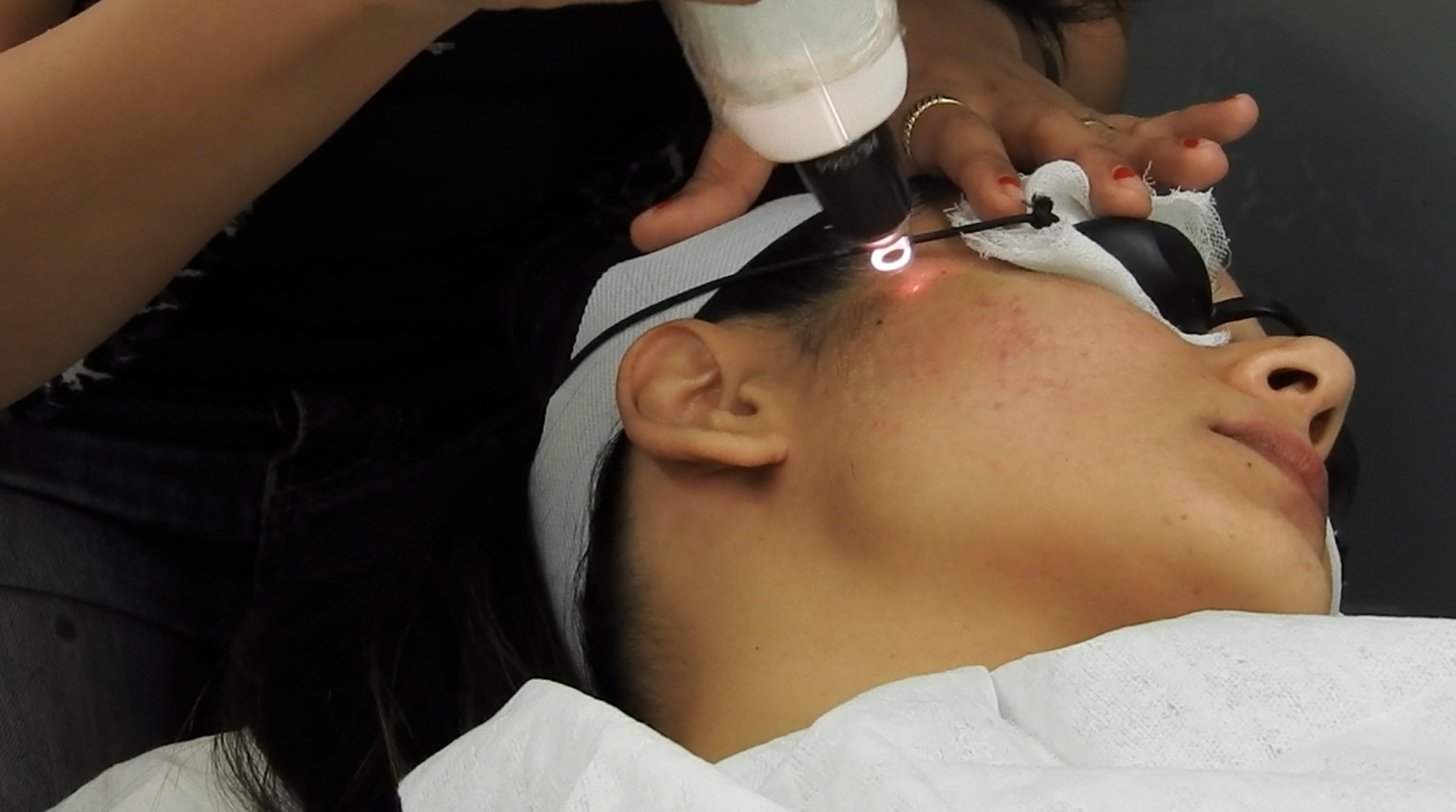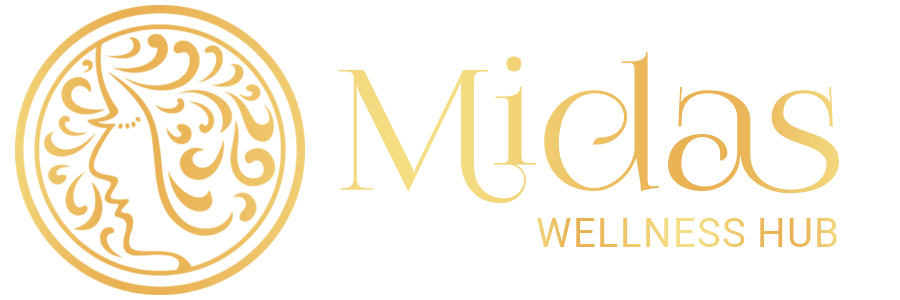
Q-Switched Laser for Acne Scars: Permanent Solution or Just a Trend?

Q-Switched Laser for Acne Scars: Permanent Solution or Just a Trend?
Introduction
Acne may fade, but the scars it leaves behind can affect your confidence for years. From pitted marks to dark pigmentation, acne scars are one of the most challenging skin concerns to treat. Among the many solutions available today, at Midas Wellness Hub Q-Switched Laser Treatment is gaining popularity as a safe, effective, and non-invasive option. But the big question is can Q-Switched Laser really clear acne scars, or is it just another skincare trend?
In this blog, we’ll break down everything you need to know about Q-Switched Laser for acne scars how it works, benefits, procedure details, cost, side effects, and what kind of results you can realistically expect.
What Are Acne Scars?

Before diving into the treatment, it’s important to understand acne scars themselves. Acne scars typically fall into two categories:
1. Atrophic Scars (Indentations in the skin):
- Ice-pick scars (small, deep holes)
- Boxcar scars (broad, shallow depressions)
- Rolling scars (wave-like texture on skin)
2. Pigmented Scars (Discoloration left after acne):
- Post-inflammatory hyperpigmentation (dark spots)
- Red or pink marks
While creams and serums can help fade pigmentation, deeper scars usually require advanced dermatological treatments like Q-Switched Laser.
What Is Q-Switched Laser?

A Q-Switched Laser is a specialized laser that delivers powerful energy pulses in billionths of a second. These ultra-fast bursts target pigmented cells or damaged skin tissue without harming the surrounding skin.
Wavelengths Used:
- 1064 nm (penetrates deeper, treats pigmentation in darker skin tones)
- 532 nm (for surface-level pigmentation and redness)
How It Helps in Acne Scars:
- Breaks down excess pigment (dark spots from acne).
- Stimulates collagen production, helping skin heal and smoothen over time.
- Improves overall texture, reducing scar visibility.
Benefits of Q-Switched Laser for Acne Scars
1. Reduces Pigmentation Marks:
Dark spots and red marks caused by acne fade significantly.
2. Stimulates Collagen for Skin Healing:
Triggers the skin’s natural healing process, filling in scars gradually.
3. Improves Skin Texture:
Smoothens rough patches and evens skin tone.
4. Safe for Indian Skin Types:
Works effectively on medium-to-dark skin tones, unlike some harsher lasers that may cause burns or hyperpigmentation.
5. Minimal Downtime:
Most people can resume normal activities the same day.
The Procedure: What to Expect

A typical Q-Switched Laser session for acne scars involves:
1. Consultation:
Dermatologist examines scar type and skin condition.
2. Preparation:
Skin is cleaned thoroughly.
A numbing cream may be applied for comfort.
3. Laser Application:
Handheld laser device delivers quick pulses to targeted areas.
Sensation feels like a light rubber band snap.
4. Duration:
20–40 minutes depending on scar severity and treatment area.
5. Post-Treatment Care:
Cooling gel or soothing cream is applied.
Sunscreen is essential for protection.
Results: How Effective Is It?
Pigmentation scars: Noticeable improvement after 2–4 sessions.
Textured scars (like ice-pick or boxcar): May require 4–8 sessions plus combination treatments (e.g., microneedling or fractional lasers).
Final Results: Brighter, smoother skin with scars fading gradually over weeks.
Important: Q-Switched Laser improves scars significantly but may not erase them 100% especially deep atrophic scars. Many dermatologists recommend combining it with other advanced treatments for the best results.
Side Effects & Risks
Like all medical treatments, Q-Switched Laser has some possible side effects:
Redness and mild swelling (temporary, subsides in a few hours to a day).
Dryness or scabbing (heals within 5–7 days).
Temporary skin lightening or darkening (more common in darker skin tones).
To minimize risks, always choose a qualified dermatologist with experience in laser treatments.
Aftercare Tips for Best Results
1. Use Sunscreen (SPF 50+) daily.
2. Avoid scrubbing or exfoliating for at least a week.
3. Stay away from steam rooms, saunas, or hot showers for a few days.
4. Moisturize regularly to keep skin hydrated.
5. Avoid makeup for 24 hours post-treatment.
Factors Affecting Price:
- Depth and type of scars
- Area being treated
- Reputation of dermatologist and clinic location
Compared to long-term costs of creams or invasive procedures, Q-Switched Laser is considered affordable and effective.
Who Should Avoid Q-Switched Laser?
- Pregnant or breastfeeding women
- People with active acne breakouts or skin infections
- Those with skin conditions like eczema, psoriasis, or vitiligo
- Individuals prone to keloids (raised scars)
- Always get a professional consultation to check suitability.
FAQs on Q-Switched Laser for Acne Scars
1. Is Q-Switched Laser painful?
Only mild discomfort; numbing cream reduces sensitivity.
2. How many sessions are needed?
Most patients see results in 4–6 sessions, spaced 3–4 weeks apart.
3. Are results permanent?
Yes, pigmentation improvement is permanent. However, new scars may form if acne reoccurs.
4. Can it treat all types of acne scars?
It works best on pigmentation and mild-to-moderate scars. Deep pitted scars may need combination treatments.
5. Is it safe for darker skin tones?
Yes, especially with Nd:YAG (1064 nm) lasers, which are designed for Indian and Asian skin types.
Conclusion
Q-Switched Laser is a safe, effective, and scientifically proven solution for reducing acne scars especially pigmentation and mild textural marks. While it may not completely erase very deep scars, it can dramatically improve skin clarity, smoothness, and overall confidence.
If you’re struggling with acne scars that don’t fade with creams or home remedies, consulting a certified dermatologist for Q-Switched Laser could be the right step toward clear, glowing skin.
